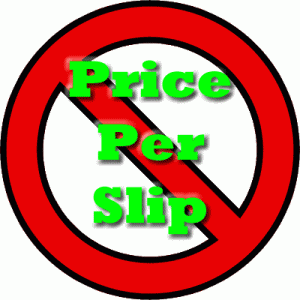It occurred to me while I was replying to a comment on my Marina Unit of Measure Fallacy blog that price per slip is even more potentially misleading than the items I list.
 When does the price per slip not apply? When the purchaser wants to use the site differently (condo development or new boat dealership), the price per slip becomes skewed. When there’s too much land, it becomes skewed. When there are lots of buildings and on-site amenities, it becomes skewed. When the marina is purchased by a “first-time” marina investor, it becomes skewed. If there are few slips but major boat repairs or sales going on, it becomes skewed. If it is a truly “investment grade” marina, it can become skewed. Whew!
When does the price per slip not apply? When the purchaser wants to use the site differently (condo development or new boat dealership), the price per slip becomes skewed. When there’s too much land, it becomes skewed. When there are lots of buildings and on-site amenities, it becomes skewed. When the marina is purchased by a “first-time” marina investor, it becomes skewed. If there are few slips but major boat repairs or sales going on, it becomes skewed. If it is a truly “investment grade” marina, it can become skewed. Whew!
The commonality and bottom line in the above is that marinas fit into a large number of categories that are mostly discrete. A typical market participant in one category will often have absolutely no interest in another category. Why? The answer is simple: the degree of specialization and knowledge of the marina owners varies so much.
Let’s take some real world examples. The boat dealer has knowledge of boat repairs, but do they know how to run a lodging business (hotel, motel or bed and breakfast)? I think not. The opposite holds true too. Does the basic marina operator, who has never owned a boat dealership, understand the boat sales business? How about the repair business? And so it goes.
If the participants differ, clearly the definition of “comparability” should also. Comparing marinas from one tier to another and using price per slip is like comparing price per tire of a Ford to a Mercedes. The buyers are different in both cases. So are the market tiers. It’s an apples-to-oranges comparison. That’s why most marina sales comparison approaches should be only used as a “rough” check on the income approach.

